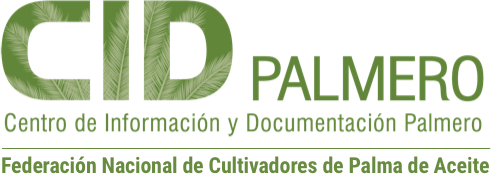A decade of landscape management tools (LMT) implementation: land cover change assessment using UAS-BASED IMAGERY – A CASE STUDY in an oil palm plantation in Mapiripán, Meta, Colombia

Disponible aquí Disponible aquí Disponible aquí Disponible aquí Disponible aquí Disponible aquí Disponible aquí Disponible aquí Disponible aquí Disponible aquí Disponible aquí Disponible aquí Disponible aquí Disponible aquí Disponible aquí Disponible aquí Disponible aquí Disponible aquí Disponible aquí Disponible aquí Disponible aquí Disponible aquí Disponible aquí Disponible aquí Disponible aquí Disponible aquí Disponible aquí Disponible aquí Disponible aquí Disponible aquí Disponible aquí Disponible aquí Disponible aquí Disponible aquí Disponible aquí Disponible aquí Disponible aquí Disponible aquí Disponible aquí Disponible aquí Disponible aquí Disponible aquí Disponible aquí Disponible aquí Disponible aquí Disponible aquí Disponible aquí Disponible aquí Disponible aquí Disponible aquí Disponible aquí Disponible aquí Disponible aquí Disponible aquí Disponible aquí Disponible aquí Disponible aquí Disponible aquí Disponible aquí Disponible aquí Disponible aquí Disponible aquí Disponible aquí Disponible aquí Disponible aquí Disponible aquí Disponible aquí Disponible aquí Disponible aquí
Author
Gómez Mateus, Adriana Marcela
Magiera, Anja
Domptail, Stephanie
Espinosa, Juan Carlos
Gómez, Gustavo
Ruiz Delgado, Jonathan
Waldhardt, Rainer
Estadisticas
Publicación:
Palmas; Vol. 44 Núm. 2 (2023); 59-79
2744-8266
Palmas; Vol. 44 Núm. 2 (2023); 59-79
2744-8266
Abstract
In Colombia, oil palm is an important economic sector of the agroindustry. The main challenges are to ensure palm oil production growth and maintain the local environment and a sustainable agricultural landscape. We conducted a landscape analysis on an exemplary palm oil plantation to assess the landscape structure and land-use change between 2009 and 2019. The case study is done in the Macondo oil palm plantation, located in Mapiripán, Meta, in the eastern zone of Colombia with a total area of 5,853 hectares. The landscape analysis is based on a 2009 land cover maps GIS analysis. First, the land cover map of the plantation was divided into grid cells of 500 by 500 meters. Second, we applied landscape metrics for the landscape structure assessment and calculated a k-means cluster analysis. The grid cells were clustered into nine (9) similarity groups based on landscape metrics. Four (4) squares per group, in a total of 36, were selected as a sample of the plantation. For each selected square, we took aerial photography at a height of 100 meters to create the orthophotos. The aerial photographs were taken using Unmanned Aerial Systems (UAS), in this case, a DJI drone, and enabled us to take over 10,800 aerial photographs in 10 days. Aerial photography provides detailed and up-to-date information on land cover and land use change, which is essential for monitoring and decision-making. This landscape analysis enables plantation managers to monitor land cover change and the implemented Landscape Management Tools (LMT) within the plantation. En Colombia, la palma aceitera es un importante sector económico de la agroindustria. Los principales retos son garantizar el crecimiento de la producción de aceite de palma, y mantener el ambiente local y un paisaje agrícola sostenible. Realizamos un análisis del paisaje en una plantación ejemplar para evaluar la estructura del paisaje y el cambio de uso de la tierra entre 2009 y 2019. El estudio se realizó en la plantación Macondo, ubicada en Mapiripán, Meta. Primero, el mapa de coberturas se dividió en celdas de 500 por 500 metros. Segundo, aplicamos métricas de paisaje para la evaluación de la estructura del paisaje y calculamos un análisis de k-means. Las celdas se agruparon en nueve (9) grupos de similitud basados en la métrica del paisaje. Se seleccionaron cuatro (4) celda por grupo, en un total de 36, como muestra de la plantación. Se tomaron fotografías aéreas a una altura de 100 metros para crear las ortofotos en cada celda seleccionada. Las fotografías aéreas se tomaron utilizando sistemas aéreos no tripulados (UAS), en este caso, un dron DJI, para tomar más de 10.800 fotografías aéreas en 10 días. La fotografía aérea proporciona información detallada y actualizada sobre la cubierta terrestre y los cambios en el uso del suelo, lo que resulta esencial para el seguimiento y la toma de decisiones. Este análisis del paisaje permite a los gestores de las plantaciones supervisar el cambio de la cubierta terrestre y las herramientas de gestión del paisaje (LMT) aplicadas en la plantación.
In Colombia, oil palm is an important economic sector of the agroindustry. The main challenges are to ensure palm oil production growth and maintain the local environment and a sustainable agricultural landscape. We conducted a landscape analysis on an exemplary palm oil plantation to assess the landscape structure and land-use change between 2009 and 2019. The case study is done in the Macondo oil palm plantation, located in Mapiripán, Meta, in the eastern zone of Colombia with a total area of 5,853 hectares. The landscape analysis is based on a 2009 land cover maps GIS analysis. First, the land cover map of the plantation was divided into grid cells of 500 by 500 meters. Second, we applied landscape metrics for the landscape structure assessment and calculated a k-means cluster analysis. The grid cells were clustered into nine (9) similarity groups based on landscape metrics. Four (4) squares per group, in a total of 36, were selected as a sample of the plantation. For each selected square, we took aerial photography at a height of 100 meters to create the orthophotos. The aerial photographs were taken using Unmanned Aerial Systems (UAS), in this case, a DJI drone, and enabled us to take over 10,800 aerial photographs in 10 days. Aerial photography provides detailed and up-to-date information on land cover and land use change, which is essential for monitoring and decision-making. This landscape analysis enables plantation managers to monitor land cover change and the implemented Landscape Management Tools (LMT) within the plantation.
Palabras clave:
Evaluación de la estructura del paisaje
Cambio del uso del suelo
Herramiental de gestión del paisaje
Sistemas aéreos no tripulados
Landscape structure assessment
Land use change
Landscape management tools
Evaluación de la estructura del paisaje
Cambio del uso del suelo
Herramiental de gestión del paisaje
Sistemas aéreos no tripulados
Landscape structure assessment
Land use change
Landscape management tools
Disponible aquí Disponible aquí Disponible aquí Disponible aquí Disponible aquí Disponible aquí Disponible aquí Disponible aquí Disponible aquí Disponible aquí Disponible aquí Disponible aquí Disponible aquí Disponible aquí Disponible aquí Disponible aquí Disponible aquí Disponible aquí Disponible aquí Disponible aquí Disponible aquí Disponible aquí Disponible aquí Disponible aquí Disponible aquí Disponible aquí Disponible aquí Disponible aquí Disponible aquí Disponible aquí Disponible aquí Disponible aquí Disponible aquí Disponible aquí Disponible aquí Disponible aquí Disponible aquí Disponible aquí Disponible aquí Disponible aquí Disponible aquí Disponible aquí Disponible aquí Disponible aquí Disponible aquí Disponible aquí Disponible aquí Disponible aquí Disponible aquí Disponible aquí Disponible aquí Disponible aquí Disponible aquí Disponible aquí Disponible aquí Disponible aquí Disponible aquí Disponible aquí Disponible aquí Disponible aquí Disponible aquí Disponible aquí Disponible aquí Disponible aquí Disponible aquí Disponible aquí Disponible aquí Disponible aquí Disponible aquí


